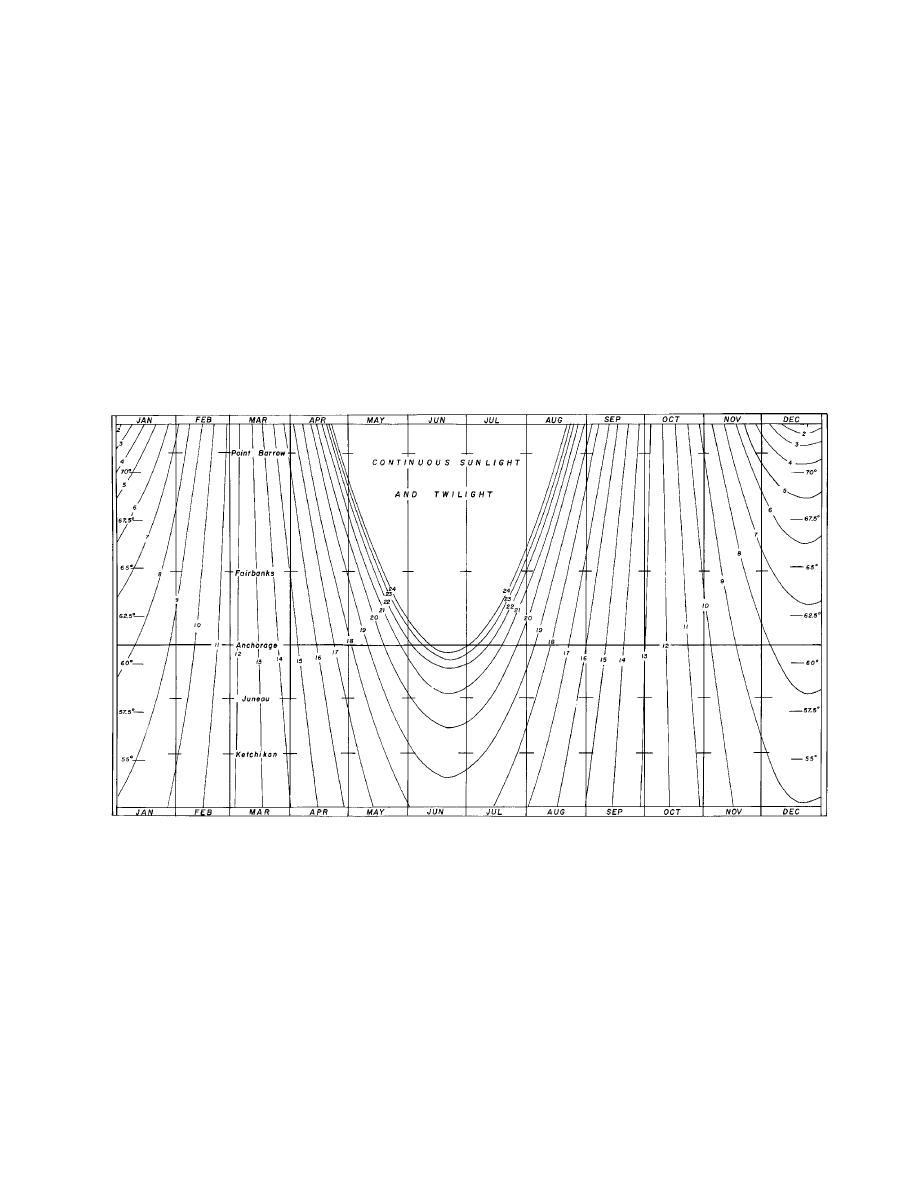
figure shows, for example, that Anchorage experiences
6.3 Duration of daylight
The duration of daylight is defined as the day's
approximately 13 hours of daylight on March 15 and
length between sunrise and sunset, and it varies ac-
on October 1.
cording to location on the earth and time of year. Sun-
The times of sunrise and sunset at Kenai for the
rise and sunset are conventionally considered to oc-
year 2000 are shown in Table 9, which was generated
cur when the upper edge of the sun is coincident with
from a web-based routine that is available at the U.S.
an unobstructed horizon, under average atmospheric
Naval Observatory website (USNO 2000). The times
conditions for an observer at sea level. However, at
shown are accurate to within a few minutes for any
northern latitudes, twilight, when the sun is not far
other year of interest. A random comparison of dates
below the horizon, adds significant time of usable light
throughout the 21st century showed that the predicted
to the period of continuous sunlight. The duration of
times of sunrise and sunset agree to within three min-
continuous sunlight plus twilight for a band of north-
utes of those shown for the year 2000. At Kenai the
ern latitudes is shown in Figure 28. Several represen-
duration of sunlight ranges from about 5.7 hours
tative Alaskan locations are shown for reference. The
around December 21 to 19.1 hours around June 21.
Figure 28. Total length of daylight (combined sunlight and twilight) for Alaska locations. (From Selkregg
et al. 1972)
71



 Previous Page
Previous Page
